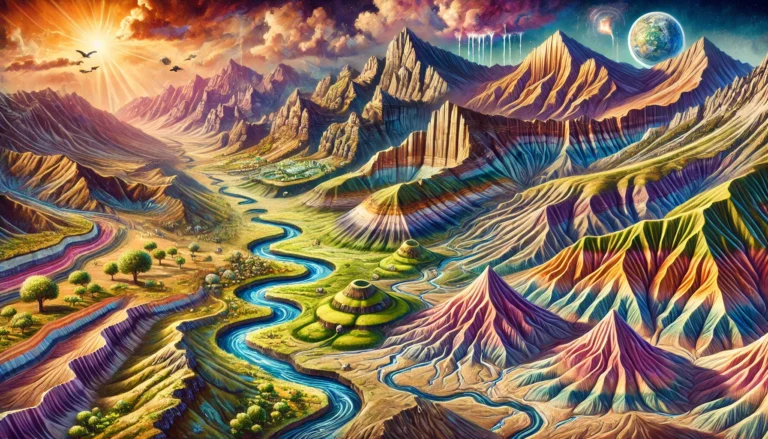Introduction to Ocean Currents
Imagine you are standing on the shores of Mumbai, watching the waves crash against the coast. You might think the ocean is a vast, motionless expanse, but in reality, it’s a dynamic, ever-moving system—almost like a network of invisible highways carrying water across the globe. This movement of ocean water in a definite direction is what we call Ocean Currents.
Why Does the Ocean Move?
Just like the air in our atmosphere moves to create winds, the water in our oceans moves in distinct patterns. But what forces drive this movement?
- Wind Friction (Main Driver of Horizontal Currents):
Picture a tablecloth spread over a smooth surface. If you blow over it, the cloth moves in the direction of your breath. Similarly, the winds that blow over the ocean exert friction on the surface water, dragging it along. This creates horizontal ocean currents. - Earth’s Rotation and the Coriolis Force:
Now, let’s add another layer. The Earth rotates, and this motion causes an interesting effect—water doesn’t move in a straight line but gets deflected due to the Coriolis force.- In the Northern Hemisphere, currents get deflected to the right.
- In the Southern Hemisphere, they veer to the left.
- This is why major currents follow curved paths rather than straight lines.
- Water Level Gradient Differences:
Some parts of the ocean are slightly higher than others due to wind pressure, temperature variations, and salinity differences. Water naturally moves from higher levels to lower levels, contributing to ocean currents. - Density Differences (Main Driver of Vertical Currents):
Think of a glass of cold and hot water. Cold water, being denser, sinks while warm water rises. In the ocean, the same principle applies:- Cold, salty water is heavier and sinks, creating downward currents.
- Warm, less salty water is lighter and rises, creating upward currents.
- These movements create vertical currents, which play a crucial role in regulating global climate.
Types of Oceanic Movements: Drift, Current, and Stream
Ocean movements differ in speed and scale, just like different modes of transport. Let’s understand them:
- Drift (The Slow Walk of Water):
Imagine a gentle breeze pushing a paper boat across a pond. The slow forward movement of ocean water due to prevailing winds is called drift. It is the weakest form of ocean movement. - Current (The Flowing River of the Sea):
Now, think of a small river flowing with a noticeable pace. When ocean water moves more forcefully in a specific direction, it forms an ocean current. Currents are stronger and more organized than drift. - Stream (The High-Speed Ocean Expressway):
Finally, picture the powerful Ganga river, rushing with immense speed. In the ocean, when a large mass of water moves rapidly like a big river, it is called a stream.- Streams are the strongest, followed by currents, and then drifts.
(Velocity) Stream > (Velocity) Current > (Velocity) Drift
A real-world example is the Gulf Stream—a powerful oceanic stream that moves warm water from the Gulf of Mexico towards Europe, significantly impacting the climate there.
Final Thought: Why Do Ocean Currents Matter?
Ocean currents control global climate, influence marine life, and even affect human activities like fishing and shipping. Without them, some places would be unbearably hot, while others would freeze.





